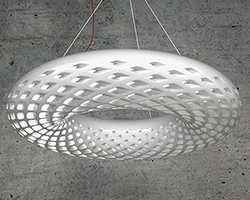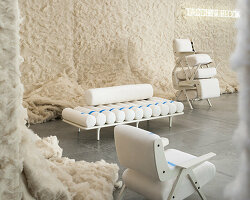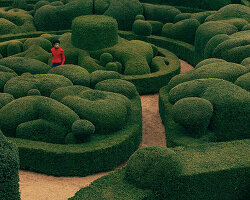studio formafantasma brings roman antiquity + materiality to design miami/ basel with ‘delta’ collection
‘acquedotto I, II, III’, 2016
water pitcher, oil dispenser, vinegar dispenser
porcelain
design miami/ basel 2016: studio formafantasma creatively bridges the gap between craft, industry, object and user, with their work strongly defined by an exploration of the relationship between traditional and local cultures and craft practices, through the use of experimental and more unconventional materials. the research-based practice of the italian design duo (andrea trimarchi and simone farresin) recently took them to rome, where they embarked on a year-long journey surveying the built environment of the historic city, visiting many roman archeological venues and museums, and taking numerous photos, documenting their fieldwork which then become the foundation of ‘delta’—a series of sculptural furniture objects that express a mix of architectural styles they observed around the italian capital, that have over the centuries have built up layers of antiquity and narrative.
‘acquedotto II’, water pitcher, 2016
more specifically, studio formafantasma took influences from rome’s main waterway, the river trevere and its delta—the part of the river that is formed by the deposition of debris carried by water over millenia—for which the project takes its moniker from. in a way, ‘delta’ also stands as a metaphor for the collective process the pair engaged in during the development of the collection. they employed a very definitive selection of materials that emerged from their findings, including: marbles, metals, porcelain and wood that recall precipitate and deposit found in a delta, using them to form a family of lighting, tableware vessels, an oil lantern, a cabinet and a mirror.

‘acquedotto I’, vinegar dispenser, 2016
trimarchi and farresin’s fascination with mundane objects of imperial rome, along with some artifacts seen in museums, served as muses; while other designs which have emerged are directly sampled and carefully updated for contemporary use. this is seen in the ‘acquedotto’ series of porcelain pieces whose forms have been left relatively unchanged by the designers, rendered in colors—reds and blacks that were seen extensively, with only the addition of subtle off-white—that are clear references to the history of roman pottery.
‘reflector’, 2016
table lamp
polished gilded brass, bronze, travertine, LED
travertine stone is paired extensively with brass in the ‘delta’ collection of luminaires. in ‘eclipse’, a thin LED lighting disk is hung in front of another in stone. formally recalling the central opening in the pantheon ceiling, the illumination reflected off of the travertine recreates a peculiar feeling of the sun illuminating roman buildings.

the travertine stone support of the ‘reflector’ table lamp makes references to roman architecture
in contrast, the ‘helmet’ light is a composition of curved brass pieces that are placed on an electrified plate. designed in such a way that the traditional switch is removed, studio formafantasma transforms the action of activating light with a new gesture: via turning the top wings in different positions to turn the lamp on or off.

‘eclipse’, 2016
ceiling lamp
polished gilded brass, travertine, perspex, gilded guitar strings, LED
throughout the creative realization of ‘delta’, the beauty of roman ruins survived over the centuries stripped down to almost no decoration, along with the functional perfection of the utilitarian objects conserved in cultural institutions, appeared to the studio formafantasma as extremely contemporary and naturally connected in the design attitude of some of the 20th century rational architecture built in rome. this is evident in the ‘theca’ cabinet of gridded wooden containers, mounted on a travertine structure recalling both the marble benches on the terrace of the ‘palace of congress’ by adalberto libera, and the ‘SGI building’ by luigi moretti at the EUR area in rome. 
material details of the ‘eclipse’ ceiling lamp in which a thin LED lighting disk is hung in front of another in stone
‘delta’ was produced in collaboration with roman design gallery giustini / stagetti, and galleria o. roma. the project has been curated by domitilla dardi as part of the gallery’s ‘priato romano interno’ program, which since 2012 has been actively run by emanuela nobile mino, with the first collection designed by fernando and humberto campana. the program commissions international designers to turn to rome as source of influence in which they are to give life to new furniture pieces, a selection of which have been produced by fonderia battaglia, milano.
‘eclipse’ recalls the central opening in the pantheon ceiling
curator domitilla dardi on studio formafantasma’s ‘delta’:
‘the goal of the historian is to portray time‘ – george kubler, the shape of time, 1972
‘the delta is the temporal or spatial interval running between two points: it does not divide, but connects realities that would otherwise be distinct.
for its project dedicated to rome, studio formafantasma chose the name ‘delta’ precisely because it does not focus upon a single moment of the complex physical and historical stratification of the eternal city, but rather upon a temporal bridge. it is in this interval that epochs and sedimentations, like layers of transparent transversality, make up a new reality. in fact, what comes through in the works of the collection is not a form unto itself, but the result of an investigation into what kubler had defined as, ‘the shape of time’. what emerges, therefore, is a more anthropological than semantic dimension, made up as much of intuition as of research and reasoning. this is an established method of working for formafantasma which here, for the first time, sees them take on not so much the theme of ancientness, but rather that of the pre-existence of the memory-object with a wider span of present affinities.

‘magnifier’, 2016
ceiling lamp
polished gilded brass, glass, LED
delta opens and closes between rome’s remote past – etruscan or republican rome, with its everyday objects in which the votive and the daily merge – and the city of the recent past: that of rationalist metaphysics, with the archetype of geometry punctuated by the rhythm of full and empty and of light and shadow.
small items of tableware follow a profile steeped in history yet which, at the same time, is timeless. what we are witnessing here is not the perfect replication of the student, nor is it collecting as the curious would or, indeed, conserving, as would the antiquarian. the attitude here is that of the historian researching his or her own, very personal, portrait of time and detecting, in the biological sequence of becoming, the form of what is persistent and durable. the shadow cast upon the tabletop landscape could be that of a sculpture, of a monument, of architecture or, more simply, of the sanctity of an essential function such as existing in the present.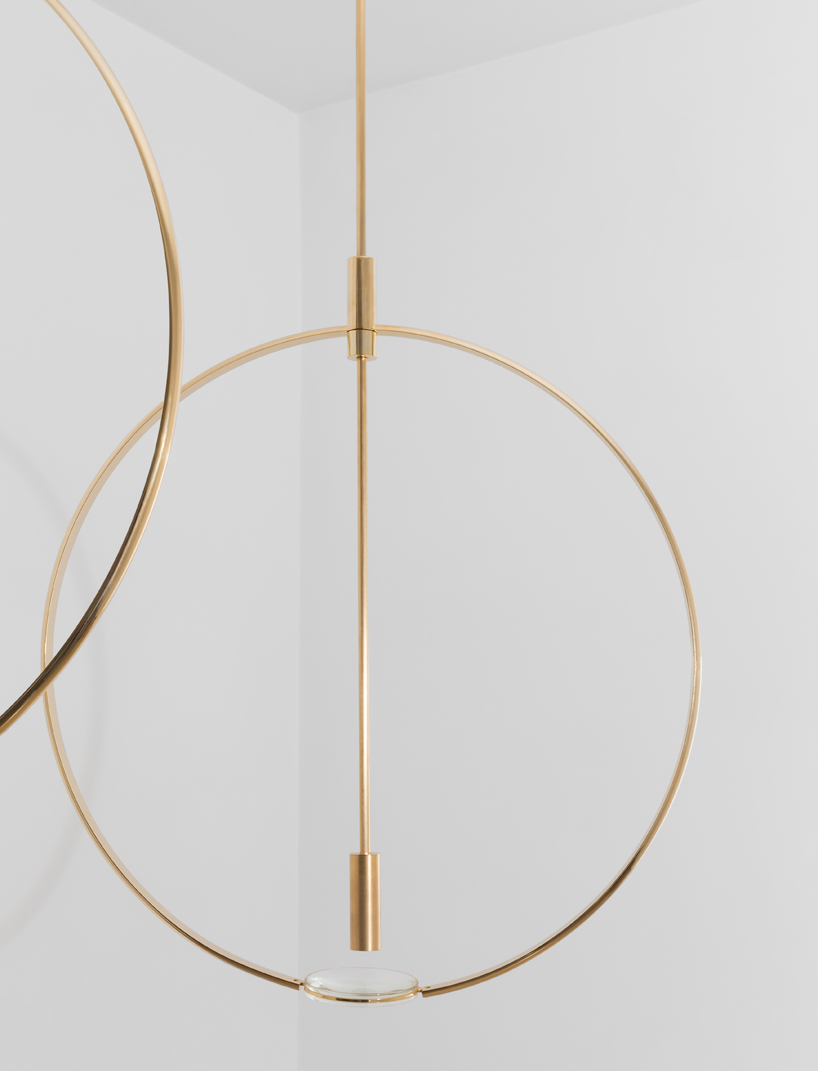
‘magnifier’, 2016
ceiling lamp
polished gilded brass, glass, LED
a cabinet maintains and preserves its contents; used to classify and sort, it is also a physical presence within an interior. its clean volumes are those of black and white films, of cinema – where rome’s vocation for the ‘eternal’ has been amply captured – and, with a mocking irreverence and disdain of decay, of going ‘beyond’ it. lending itself to everything, more so than any other material possible, is light. in all its shifts and seasonal transitions, formafantasma have learnt know the light of rome. it is for this very reason they have seized upon the invariant: i.e. the close and continual collaboration between the light of rome and its architecture. the light of rome is never merely natural. even when it is a pure ray of sunlight, there is always a refractive mediation: a solid intercepting its diffusion; a void enhancing its purity; a material colour amplifying a tone.

‘magnifier’
floor lamp
polished gilded brass, glass, travertine, LED
here, then, the design of a lamp becomes that of a medium; speaking in the broadest sense of the light of a place, as seen through the eyes of the designer. thus, when architecture as a whole becomes a sundial, as with the oculus in the pantheon that renders the beam visible within the physicality of a golden disc, andrea and simone have designed a device where the circle of light is reflected back into an interior. it is almost as if this object becomes the mirror of a great technical machine, conceived to lend magic to the show, dreamt up by men of ancient times for those of the present. and if there is light reflecting, then there must also be its opposite: that which obscures and plays upon disappearance behind an apparent eclipse. the raw materials also speak clearly: metal reflects and returns vibrations to its surroundings; stone which absorbs and, if tapered like ancient columns, makes the light resonate and mysteriously elusive. however, nothing would be this way, were it not for man, with his gesture, activating, modulating, intervening and sometimes, rejoicing. the light turns on and off with a movement that lends unexpected functionality to an ancient and absolute geometry, but which is also, with the merest of touches – quite void of undue ponderance – able to make moving lights dance and bring an amused smile to our mouths. thus, by looking carefully and without bias, the portrait of time can be happier than the sum of its best moments.’
detail of the ‘magnifier’ which ‘magnifies’ the light which is shown upon it
subtle sculptural detail of the ‘magnifier’ base
‘regula’, 2016
wall lamp
manually mirror polished continuous casting bronze bar, steel cable, lost-wax nail, LED 
‘regula’ is structurally supported by the wall
‘imago’, 2016
mirror
ring: gilded brass; guitar string: bronze; big ring: brass; mirror: gilded mirrored steel 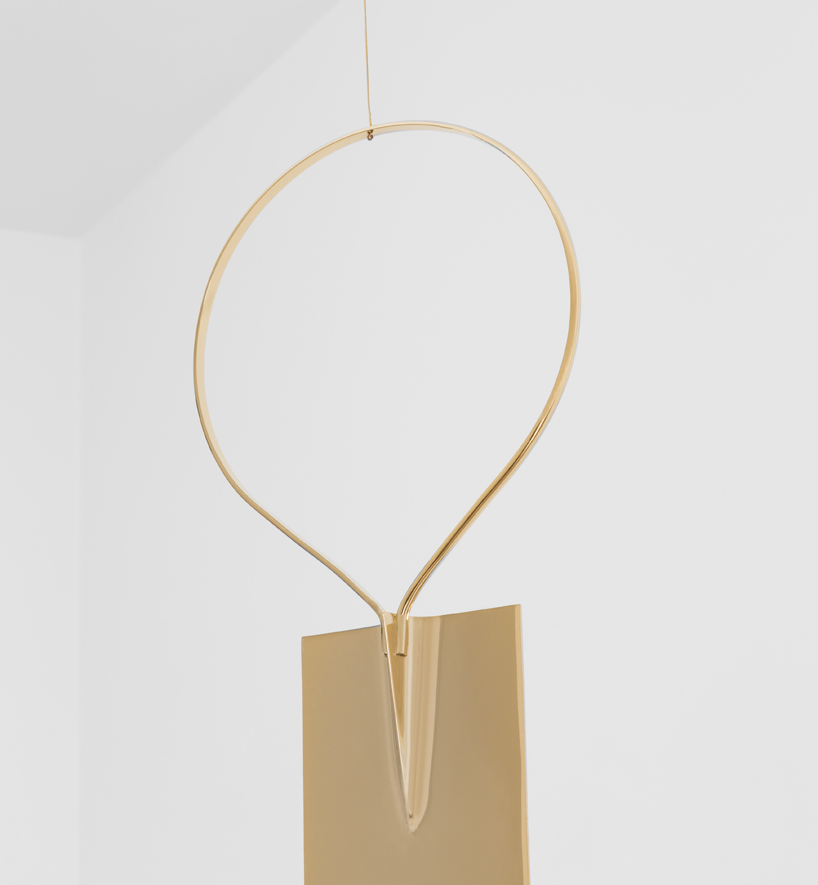
‘imago’, 2016
mirror
ring: gilded brass; guitar string: bronze; big ring: brass; mirror: gilded mirrored steel 
‘helmet’, 2016
table lamp
polished gilded brass, LED 
the ‘helmet’ light is a composition of curved brass pieces that are placed on an electrified plate

‘lake bowl I’, 2016
bowl
gilded brass 
‘lake bowl II’, 2016
bowl
gilded brass 
domus, sidetable, 2016

domus, sidetable, 2016
‘theca’, 2016
cabinet
maple wood, ‘navona’ travertine marble, gilded brass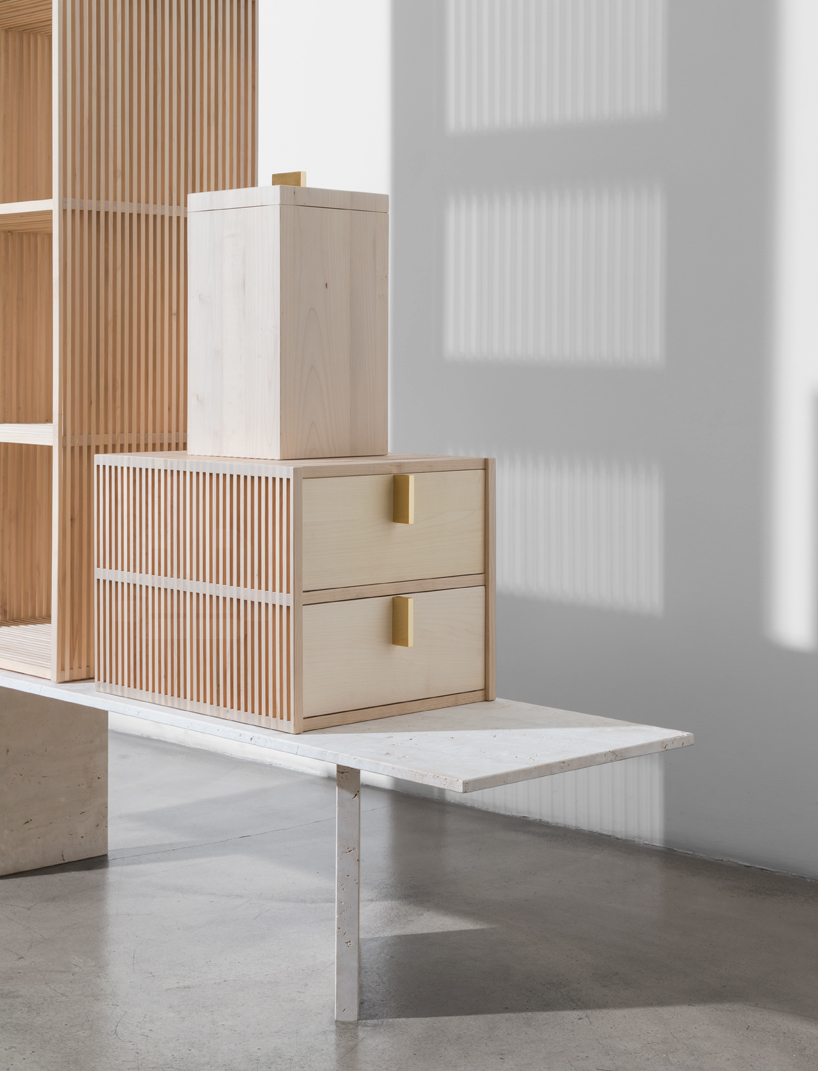
‘theca’ recalls the design attitude of some of the 20th century rational architecture built in rome
project credits:
concept, design: andrea trimarchi, simone farresin
curator: domitilla dardi
development: daniele misso, jeroen van der gruiter, nicolas verschaeve
production: galleria giustini stagetti-galleria o.roma, fonderia artistica battaglia
photography: giuseppe brancato

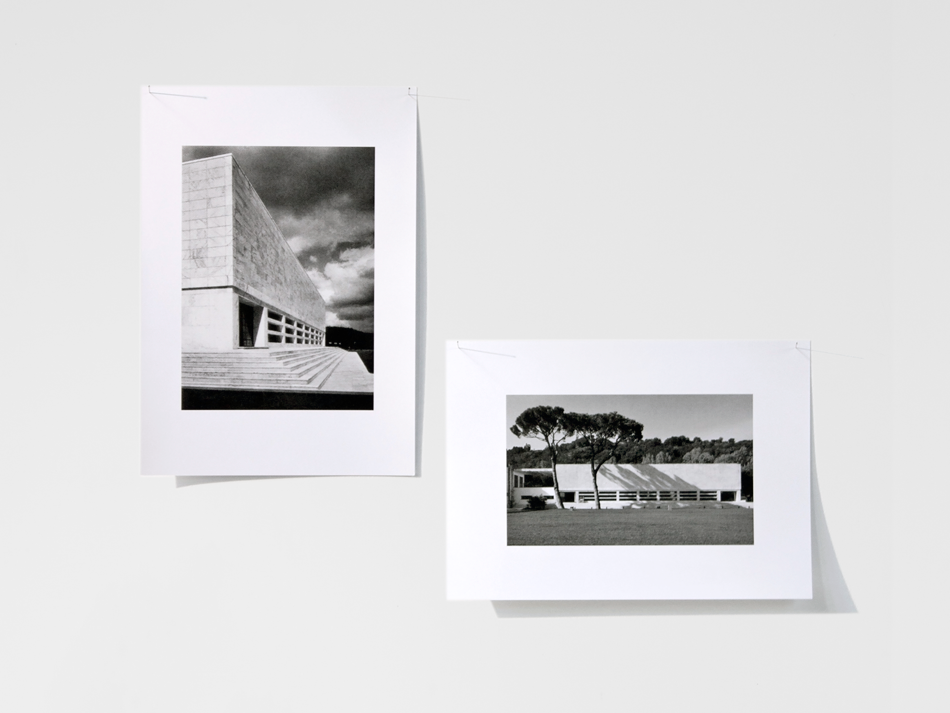





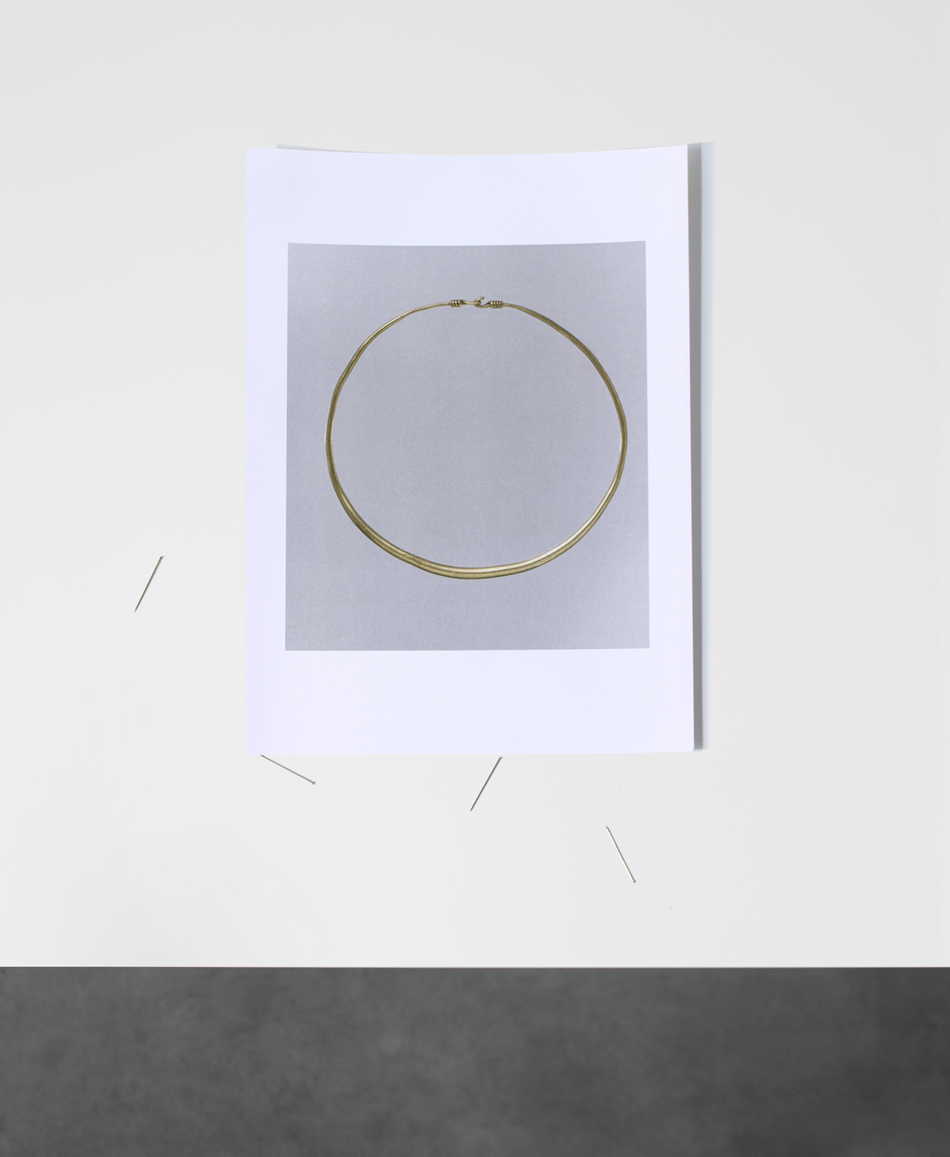

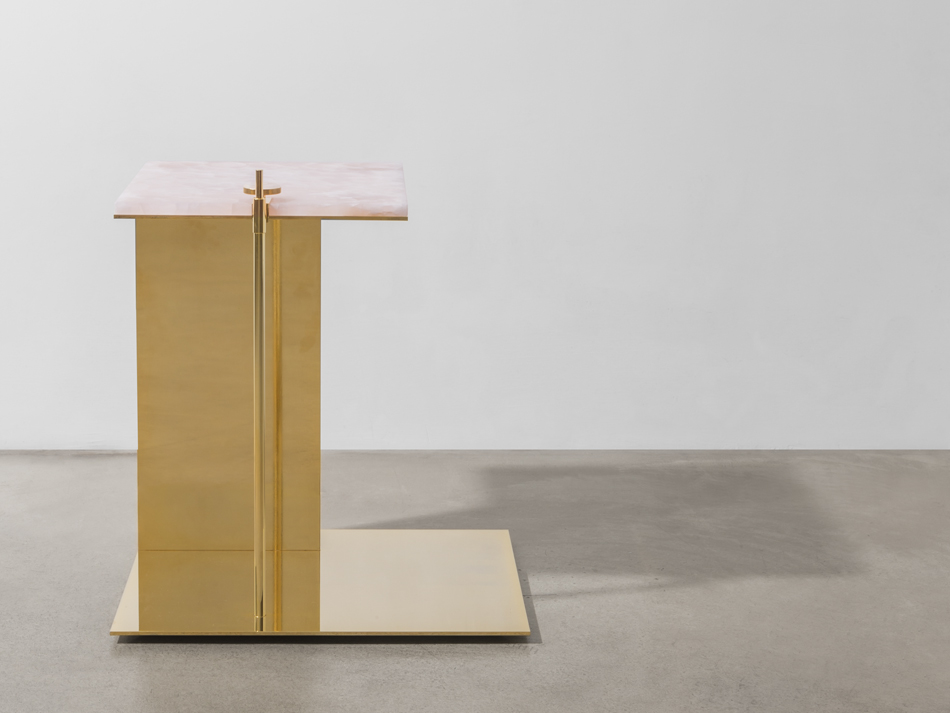


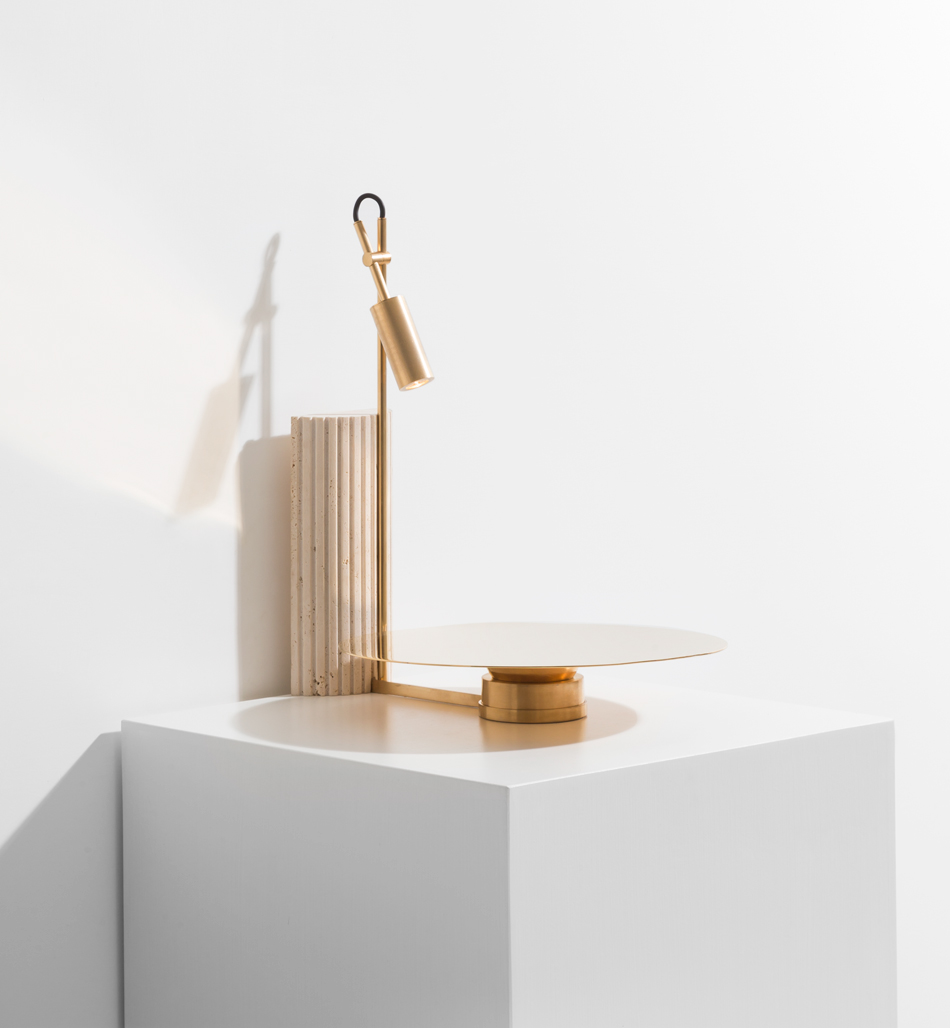










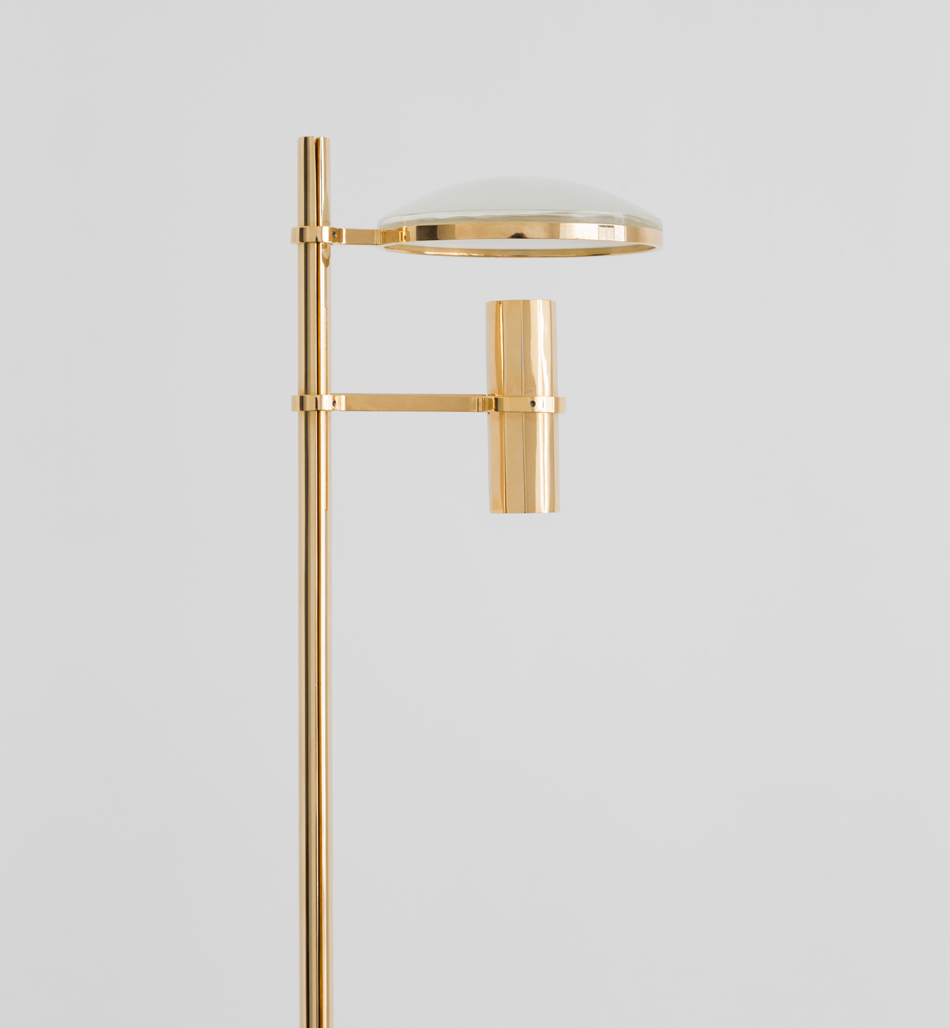




Save
Save
Save
Save
Save
Save
Save
Save
Save
Save
Save
Save
Save
Save
Save
Save
design miami/ basel 2016 (11)
formafantasma (45)
PRODUCT LIBRARY
a diverse digital database that acts as a valuable guide in gaining insight and information about a product directly from the manufacturer, and serves as a rich reference point in developing a project or scheme.


